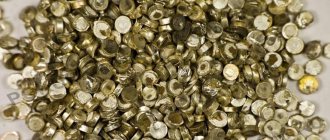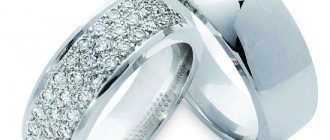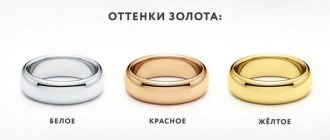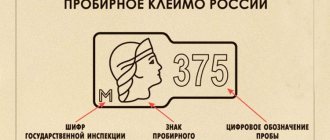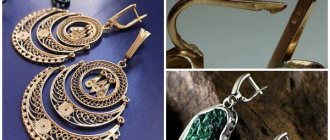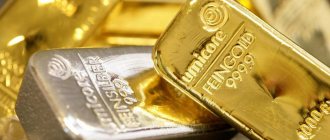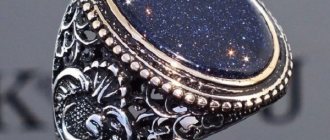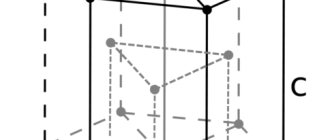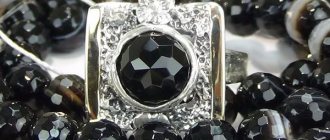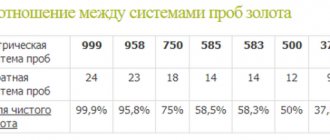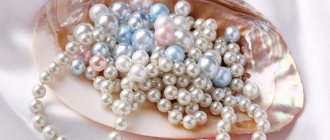Application
Where can dunite stone be used:
- Most often used as a breed for laying in a steam room.
- Acts as a facing material in ovens.
- Can act as a fertilizer when planting potatoes.
- In combination with clay, it acts as a refractory material for laying out stoves in bathhouses.
- It is an ornamental stone.
- As a floor covering with an anti-slip surface.
- In the manufacture of heat-resistant ceramics.
This mineral is not used in construction.
Place of Birth
Ultramafic igneous rocks are widespread in the Urals and the Caucasus. The Kytlym dunite deposit, which is located in the north of the Middle Urals and is associated with a large deposit of alluvial platinum, is famous. Greenish and yellowish dunites form a 1.5 km wide intrusion in the Sverdlovsk region, called the Job Body.
When building a bathhouse on your own plot, the owner is faced with several questions. How to line the stove and fill it? How to choose non-toxic materials? The answer is to use dunite. We will talk about this stone in more detail.
Properties
Dunite is considered one of the ideal minerals for baths. It belongs to the olivinite-dunite family, a class of ultrabasic, plutonic rocks.
Origin
A mineral such as dunite is formed much below the earth's crust at the level of the upper mantle. In the process of gradual cooling of magma at the beginning of crystallization and differentiation of lava, this rock is formed. It is usually found in deep caves, where it accumulates due to the displacement of plates during tectonic processes.
Chemical composition
The mineral contains practically no volatile substances. It is based on various oxides. Their percentages are:
- SiO₂ 35-40%;
- MgO 38-50%;
- FeO 3-6%;
- Fe₂O₃ 0.5-7%;
- Al₂O₃ up to 2.5%;
- CaO up to 1.5%;
- Na₂O up to 0.3%;
- K₂O up to 0.25%;
- TiO₂ up to 0.02%.
Mineral composition
Most of the composition of dunite - about 90% (sometimes more) belongs to the mineral olivine. It also includes chromite, pyroxenes and, in rare cases, hornblende. The mineral has a medium or fine-grained structure. Under the influence of hot underground waters and weathering, serpentinization begins, as a result of which it becomes another mineral - serpentine.
Dunite color
Dunite stone can be of different colors, up to very light or deep dark tones, even black. The most common option is various shades of green. In structure it is a completely opaque stone.
Spreading
There are dunite deposits in different places around the globe. In Russia, it can be found in the Caucasus, the Baikal region and the Northern Urals. Also on the continent you can find this breed in Ukraine and in the countries of Central Asia.
Physical and mechanical properties
List of physical and mechanical properties of the mineral:
- Retains its shape when heated or wet.
- Refractory stone with a low coefficient of linear expansion when heated.
- Thermal conductivity coefficient is 1.1-1.9 W/m*K.
- Specific heat capacity 0.6-0.8 kJ/kg*K.
- Thermal diffusivity coefficient is 7.1-8.5 m2/s.
- Density 3280 kg/m2.
History and origins
The dunite stone gets its name from New Zealand's Dun Mountain, where it was discovered.
Being a deep-seated igneous rock, dunite is formed at the initial stages of lava differentiation, when olivine and, in some cases, chromite crystallize from the melt. Settling at the bottom of the magma chamber, the mineral forms an almost monomineral rock.
Mineral - Dunite
The main component of dunite is olivine - it consists of 85-90% of it, which determines the color of the stone, which varies from dark gray to almost black and from yellowish-green to dark green.
Under the influence of weathering, olivine, which is part of this rock, is transformed into serpentine and partially into magnetite. Dunite can rarely be found in an unaltered form: as a rule, it is largely serpentinized or even completely transformed into a serpentine. Chromium and magnetic iron ores are also often found in dunite.
Typically, dunite is found in the lower layered horizon of the main intrusions.
Advantages and disadvantages
The mineral rock dunite has both pros and cons. Among its positive qualities:
- the ability to heat up quickly, conduct heat well and not expand in the process. Heat is also released evenly;
- fire resistance – the ability to withstand temperatures up to 1200 degrees and not crack during operation;
- does not emit odors when heated;
- improves the condition of hair and skin, restores the functioning of the musculoskeletal and nervous systems;
- reacts with carbon dioxide, thereby preventing poisoning in the steam room.
But the stone also has the following disadvantages:
- short service life of about 5-6 years;
- unattractive appearance due to the scarcity and dullness of the color scheme;
- there are a large number of fakes;
- most often you can find small stones;
- There are rocks interspersed with sulfur, which, due to elevated temperatures and humidity, turns into hydrogen sulfide acid.
Gemstone - Olivine
Olivine is essentially quartz, with magnesium-iron impurities, and has qualities similar to the following gemstones: peridot and peridot. More than a dozen names of this stone are known in nature; in Russia, jewelers call olivine chrysolite.
These lenses are found all over the world, its color depends on the saturation of impurities in it, for example, nickel and chromium, hence its uneven coloration, which can have a smooth flow from golden-greenish color to greenish-brown, in rare cases - sea green .
The variety of colors of olivine has provided jewelers with a wide range of possibilities for creating art; golden olivine, that is, peridot, is cut in a classical way and, as a rule, is inserted into an expensive frame. Other olivine products are used to make masterpieces, often giving them a more luxurious appearance. Translucent varieties are used in making rings and souvenirs.
How to choose the right dunit for a bath?
Although dunite is considered an inexpensive rock, sometimes you can stumble upon crafts or alternative minerals. Clinopyroxenite and serpentinite are often sold under the guise of dunite. They are not suitable for use in a heater, as they are not able to retain heat for a long time.
In order not to make a mistake in choosing to buy real dunite, you can use the following tips:
- Scratch the surface of the stone with a sharp object. The scratch will remain on the serpentinite.
- The stones should be free of small spots and veins of golden, gray or yellow hue. These are sulfur harmful inclusions.
- Stones can be tested for strength by simply hitting them with a hammer. They should not crack or crumble.
- You need to buy stones that are dense, durable, without defects or cracks. Otherwise, they will not last long and will quickly deteriorate.
Characteristics for the right choice
How not to buy serpentinite instead of dunite
But you should still know the following: it is a rare guest on the daytime surface that blows. It may be affected by a tectonic shift or displacement, but if this happened long enough, then most likely it was exposed to hot water with substances dissolved in it, as a result of which its mineral composition changed .
This process is called serpentinization. This is how serpentinite is obtained from dunite . And this affects its hardness and strength. The fact is that serpentinite or coils are not placed in the heater at all. It is not suitable for these purposes. Unless they make a stove lining out of it, and even then for its aesthetic appeal.
Stones for baths and saunas blow. Photo by Leroy Merlin
The bad news: dunite and serpentinite are similar in appearance , and if you don’t check the stones in the box, they can easily sell you serpentinite. And it doesn’t even have malicious intent - they are adjacent to each other in the same field.
Why is serpentinite bad? Not only is it inferior in hardness, but it is also prone to cracking easily and is full of microcracks.
The good news: you can distinguish it by the way the stones offered to you are scratched with an ordinary steel knife , and by the way they react to a blow with a hammer . A real dunite doesn't care about a knife or a hammer - it won't be scratched or cracked with one blow. And serpentinite will scratch easily and split.
So take a knife and a hammer with you when going to a bath accessories store. Sellers should be sensitive to this
